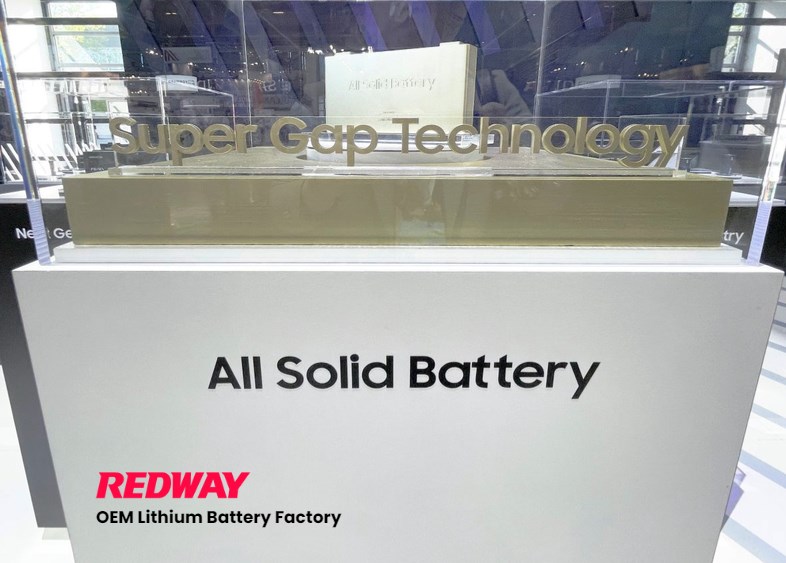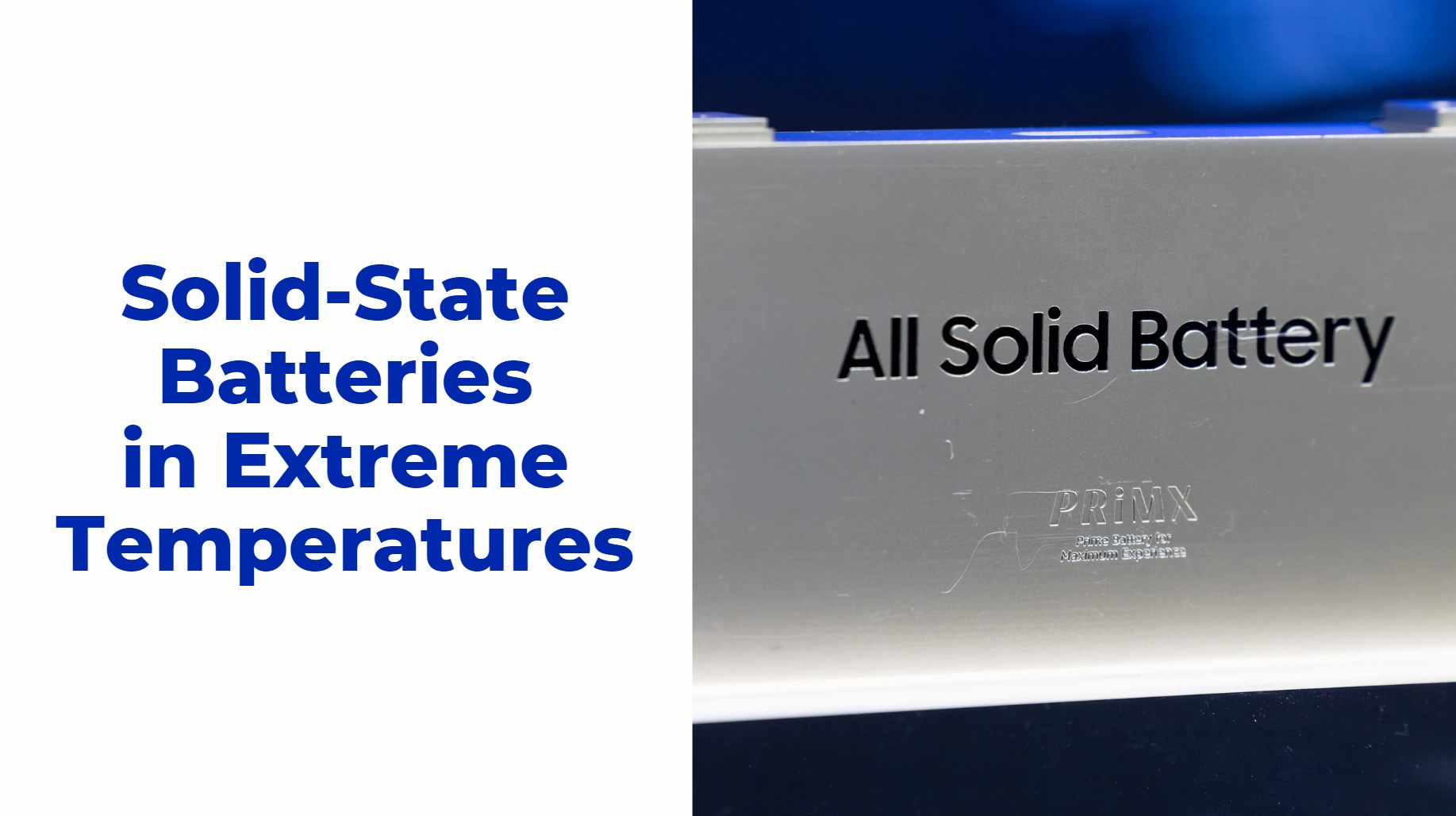As the demand for advanced energy storage solutions continues to rise, solid-state batteries have emerged as a promising alternative to traditional lithium-ion batteries. One of the most critical aspects of battery performance is its ability to function effectively under extreme temperatures. In this article, we will explore how solid-state batteries perform in both high and low-temperature environments, their advantages and challenges, and their potential applications in various industries.
Solid-state batteries, a promising alternative to traditional lithium-ion batteries, offer higher energy density, improved safety, and longer lifespan. However, their performance in extreme temperatures is a critical aspect that needs to be addressed. Freezing conditions can reduce the conductivity of the solid electrolyte, leading to decreased battery performance, while high temperatures can degrade the solid electrolyte, resulting in capacity loss. Researchers are actively working to enhance low-temperature performance and high-temperature stability. By developing solid electrolytes with improved conductivity at low temperatures and materials that can withstand high temperatures, solid-state batteries aim to provide reliable performance in extreme temperature environments.
1. Understanding Solid-State Batteries
Solid-state batteries utilize a solid electrolyte instead of the liquid or gel electrolytes found in conventional lithium-ion batteries. This fundamental difference offers several advantages, including improved safety, higher energy density, and longer lifespan. However, the performance of these batteries under extreme temperatures is a crucial factor that influences their commercial viability.

1.1 Composition of Solid-State Batteries
Solid-state batteries typically consist of:
- Anode: Often made from lithium metal or graphite.
- Cathode: Commonly composed of lithium cobalt oxide or lithium iron phosphate.
- Solid Electrolyte: This can be made from various materials such as ceramics, polymers, or glass.
The choice of materials significantly impacts the battery’s performance in extreme conditions.
2. Performance in High Temperatures
High temperatures can adversely affect battery performance, leading to reduced efficiency and lifespan. Here’s how solid-state batteries handle elevated temperatures:
2.1 Thermal Stability
Solid-state batteries generally exhibit better thermal stability compared to their liquid counterparts. The solid electrolyte is less prone to thermal runaway—a condition where the battery overheats and potentially catches fire. This stability makes solid-state batteries safer for applications in high-temperature environments.
2.2 Ionic Conductivity
While solid-state batteries perform well at elevated temperatures, their ionic conductivity can be affected:
- Increased Conductivity: Higher temperatures often enhance the ionic conductivity of solid electrolytes, improving overall battery performance.
- Degradation Risks: However, prolonged exposure to high temperatures can lead to degradation of materials, which may result in reduced capacity over time.
2.3 Real-World Applications
Industries such as electric vehicles (EVs) and aerospace are increasingly considering solid-state batteries for applications requiring high-temperature resilience. These sectors benefit from the enhanced safety and efficiency that solid-state technology offers.
3. Performance in Low Temperatures
Low temperatures present unique challenges for battery operation. Here’s how solid-state batteries cope with cold environments:
3.1 Reduced Ionic Mobility
At low temperatures, the ionic mobility within solid electrolytes can decrease significantly:
- Slower Reaction Rates: This reduction leads to slower electrochemical reactions, resulting in decreased power output and efficiency.
- Impact on Capacity: Users may notice a drop in usable capacity during cold weather conditions, which can affect performance in applications like electric vehicles during winter months.
3.2 Material Selection
The choice of materials used in solid-state batteries plays a crucial role in determining their performance at low temperatures:
- Polymer Electrolytes: Some polymer-based electrolytes maintain better conductivity at lower temperatures compared to ceramic electrolytes.
- Optimized Formulations: Research is ongoing to develop new materials that enhance ionic mobility even in cold conditions.
3.3 Strategies for Improvement
To mitigate the effects of low temperatures on solid-state battery performance:
- Thermal Management Systems: Implementing effective thermal management systems can help maintain optimal operating temperatures.
- Hybrid Solutions: Combining solid-state technology with other battery types may provide a more versatile solution for varying temperature conditions.
4. Advantages Over Traditional Batteries
Solid-state batteries offer several advantages over traditional lithium-ion batteries when it comes to temperature resilience:
4.1 Enhanced Safety Features
The absence of flammable liquid electrolytes reduces the risk of fires and explosions, making solid-state batteries a safer choice for extreme environments.
4.2 Higher Energy Density
Solid-state batteries typically have higher energy densities compared to conventional batteries, allowing them to store more energy without increasing size or weight.
4.3 Longer Lifespan
With fewer degradation issues related to temperature fluctuations, solid-state batteries often exhibit longer lifespans than traditional lithium-ion options.
5. Challenges and Future Directions
Despite their advantages, solid-state batteries face several challenges regarding temperature performance:
5.1 Manufacturing Complexity
The production processes for solid-state batteries are currently more complex and costly than those for traditional batteries, which may hinder widespread adoption.
5.2 Research and Development Needs
Continued research is essential to overcome existing limitations related to low-temperature performance and manufacturing scalability.
5.3 Future Innovations
As technology advances, we expect innovations that enhance both the thermal stability and ionic conductivity of solid-state batteries across a wider temperature range.
6. Conclusion
In summary, solid-state batteries demonstrate promising performance characteristics under extreme temperatures compared to traditional lithium-ion technologies. Their enhanced safety features, higher energy density, and longer lifespan make them suitable for various applications across industries such as electric vehicles and aerospace. While challenges remain—particularly concerning low-temperature performance—ongoing research and development efforts are paving the way for future advancements in this exciting field.By understanding how solid-state batteries perform under extreme conditions, manufacturers and consumers alike can make informed decisions about their energy storage solutions.



